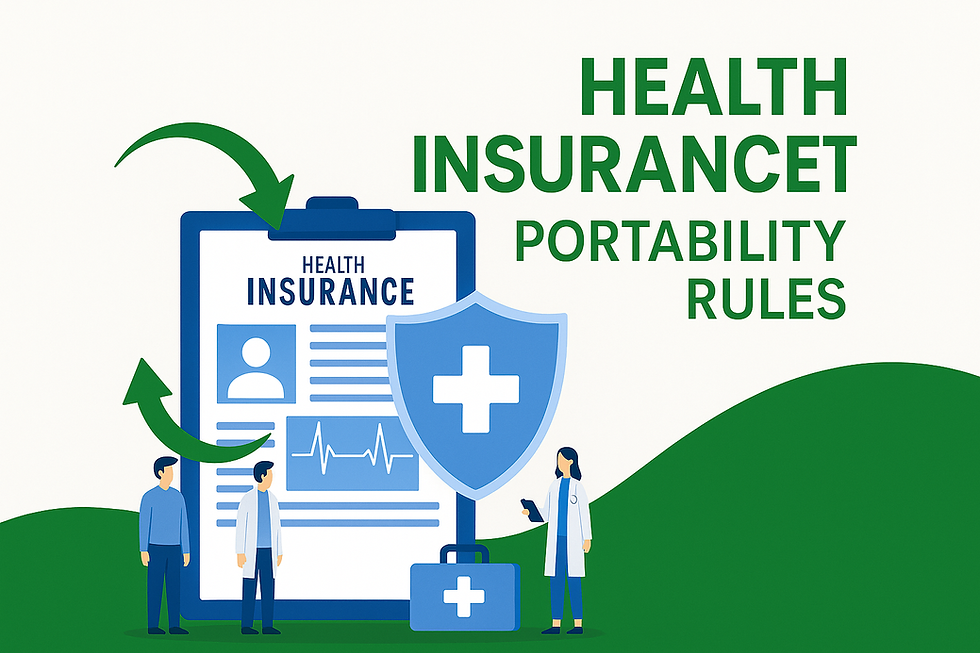Global Health Insurance Premiums Surge as Medical Inflation Hits 8% Worldwide
- Interns @btwimf.com
- Jul 29
- 3 min read

In 2025, individuals and businesses alike are facing a sharp increase in global health insurance premiums. One of the key drivers behind this spike is the alarming rise in medical inflation, which has reached an average of 8% worldwide, according to recent international health finance studies. As healthcare becomes more advanced and accessible, the cost associated with these services continues to climb—forcing insurance companies to pass on the burden to policyholders.
Why Are Global Health Insurance Premiums Rising?
The global rise in health insurance premiums is not an isolated incident. It reflects a complex mix of economic pressures, healthcare demands, and structural inefficiencies in medical systems. Here’s a closer look at the major contributors:
1. Medical Inflation at 8% Globally
Medical inflation refers to the rate at which healthcare costs increase due to rising prices of medical treatments, hospital stays, diagnostics, and pharmaceutical products. In 2025, the global average has hit 8%, significantly outpacing general inflation in most countries.
2. Increased Utilization of Health Services
Post-pandemic healthcare awareness has led to more frequent doctor visits, preventive screenings, and elective surgeries. More people are using their insurance benefits, and that raises costs for insurers.
3. Ageing Populations
In developed and developing nations alike, ageing populations are requiring longer and more intensive care—particularly for chronic conditions like diabetes, hypertension, and cancer.
4. Technology and Innovation Costs
While medical technology has vastly improved outcomes, it also brings higher costs. Advanced diagnostic tools, robotic surgeries, and biologic drugs all contribute to the surge in global health insurance premiums.
Global Health Insurance Premium Trend Data
Year | Average Global Premium Increase | Global Medical Inflation Rate |
2020 | 4.6% | 5.1% |
2022 | 5.8% | 6.2% |
2025 | 9.2% | 8.0% |
Source: International Federation of Health Plans, 2025 Report (https://www.ifhp.com)
Regional Impacts of Premium Surges
North America
Average premium for employer-based coverage crossed $8,000/year.
Private insurance deductibles and out-of-pocket caps have increased.
Europe
Governments are being forced to subsidize more to keep premiums manageable.
Debate over expanding public-private hybrid models is gaining momentum.
Asia & Africa
Rapid urbanization and middle-class growth have increased demand for private health insurance.
Premiums in some nations have grown 12–15% annually due to high medical import costs.
How It Affects Individuals and Employers
For individuals, rising global health insurance premiums mean higher monthly costs, fewer benefits, or both. For employers, especially multinationals, it affects employee benefits planning and labor cost structures. Some companies are shifting to high-deductible plans or co-pay models to curb expenses.
In developing countries, the premium increase often discourages people from renewing or purchasing coverage altogether—leading to underinsurance or total lack of coverage, increasing health risks and financial vulnerability.
Coping Strategies Amid Surging Premiums
Embrace preventive healthcare: Lowering your risk profile can reduce your personal premium rate.
Compare insurance plans: Use unbiased digital platforms to check for optimal benefits vs cost.
Opt for wellness-linked discounts: Some insurers offer premium discounts for gym memberships or fitness tracking.
Policy bundling: Family or multi-year policies often come at a discount.
FAQs: Global Health Insurance Premiums
Why is there a global increase in health insurance premiums?
Rising medical inflation, technological costs, ageing populations, and increased healthcare use are the primary reasons.
How much have premiums increased in 2025?
On average, global health insurance premiums have increased by 9.2%, primarily driven by an 8% worldwide medical inflation rate.
Are governments taking steps to control this?
Yes. Many governments are exploring subsidy reforms, health technology price regulation, and universal healthcare expansion.
Can individuals reduce their health insurance premiums?
Yes. Choosing a higher deductible, maintaining a healthy lifestyle, and comparing policy options annually can help lower costs.
Is medical inflation expected to continue rising?
Most analysts predict that medical inflation will remain elevated over the next 2–3 years, particularly in regions with an ageing population or weak healthcare infrastructure.
Reference Link
International Federation of Health Plans – Global Health Cost Report 2025
Conclusion
As medical costs rise and health systems evolve, global health insurance premiums are expected to remain high for the foreseeable future. This creates significant financial pressure on both individuals and employers. Understanding the factors driving these costs—and making informed choices about insurance—can help reduce the impact. With medical inflation at 8%, the era of cheap health insurance may be behind us. It’s crucial now more than ever to plan wisely and stay ahead of the curve in managing global health insurance premiums.










Comments